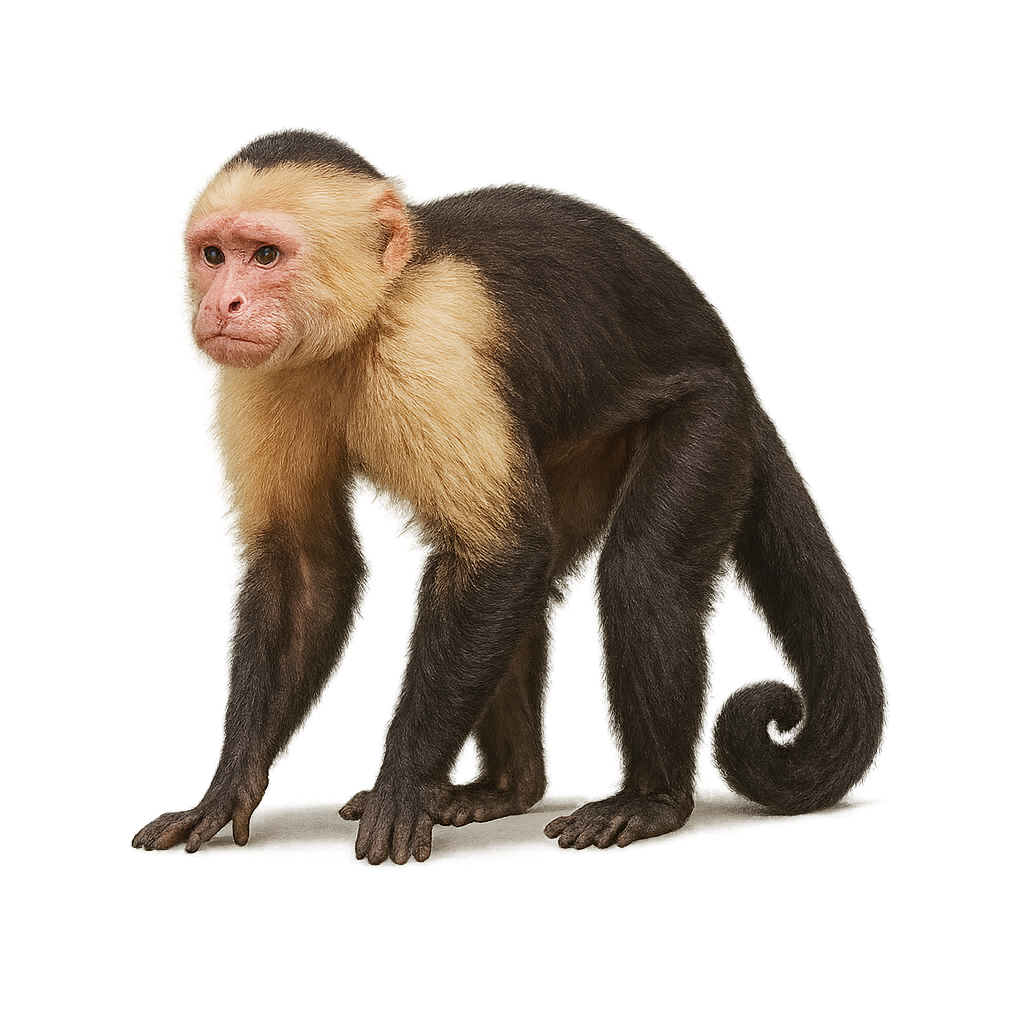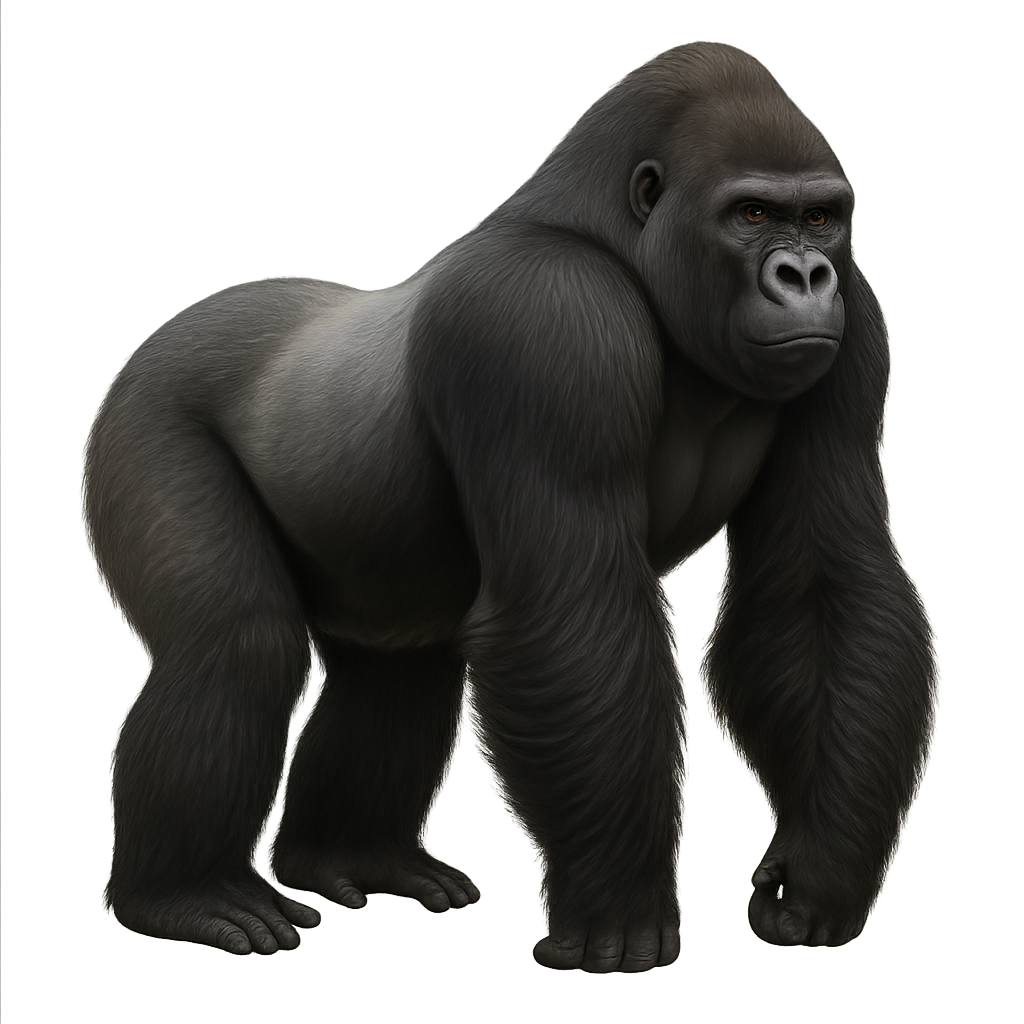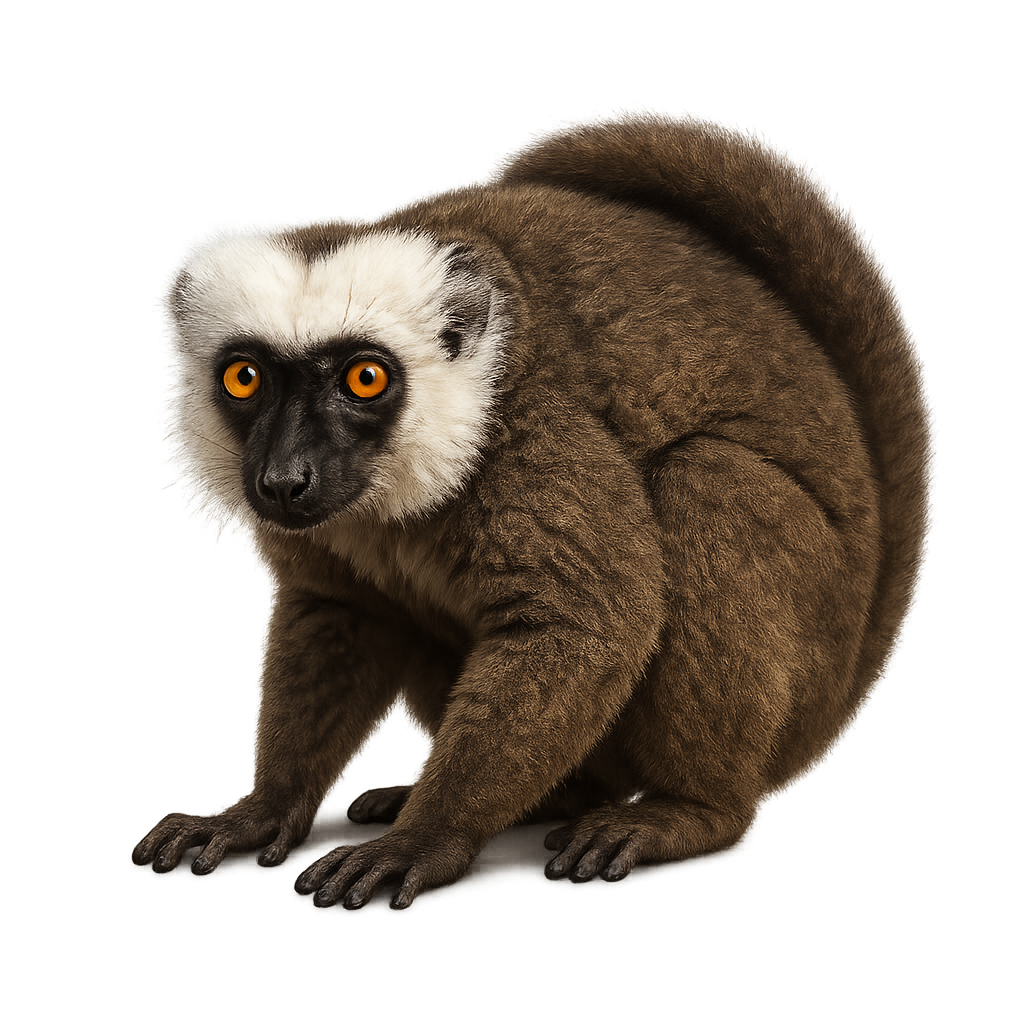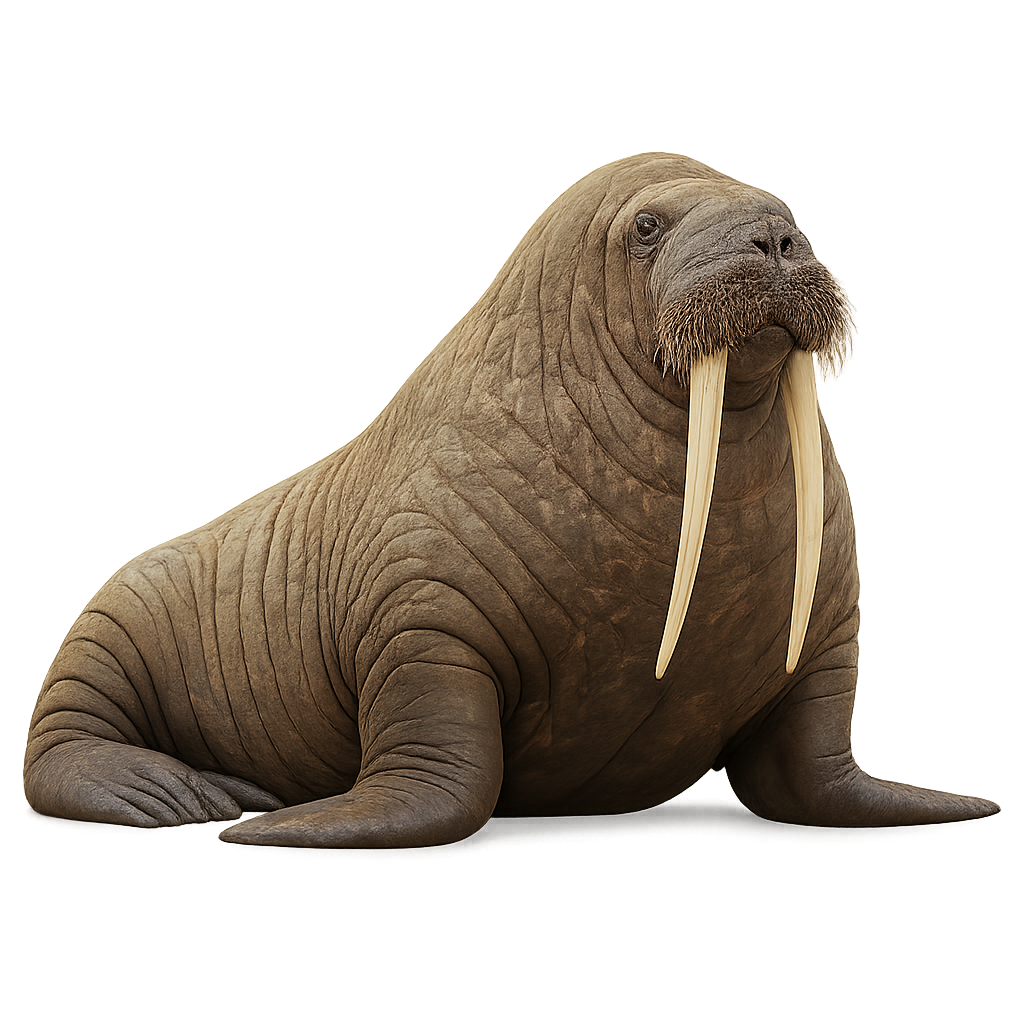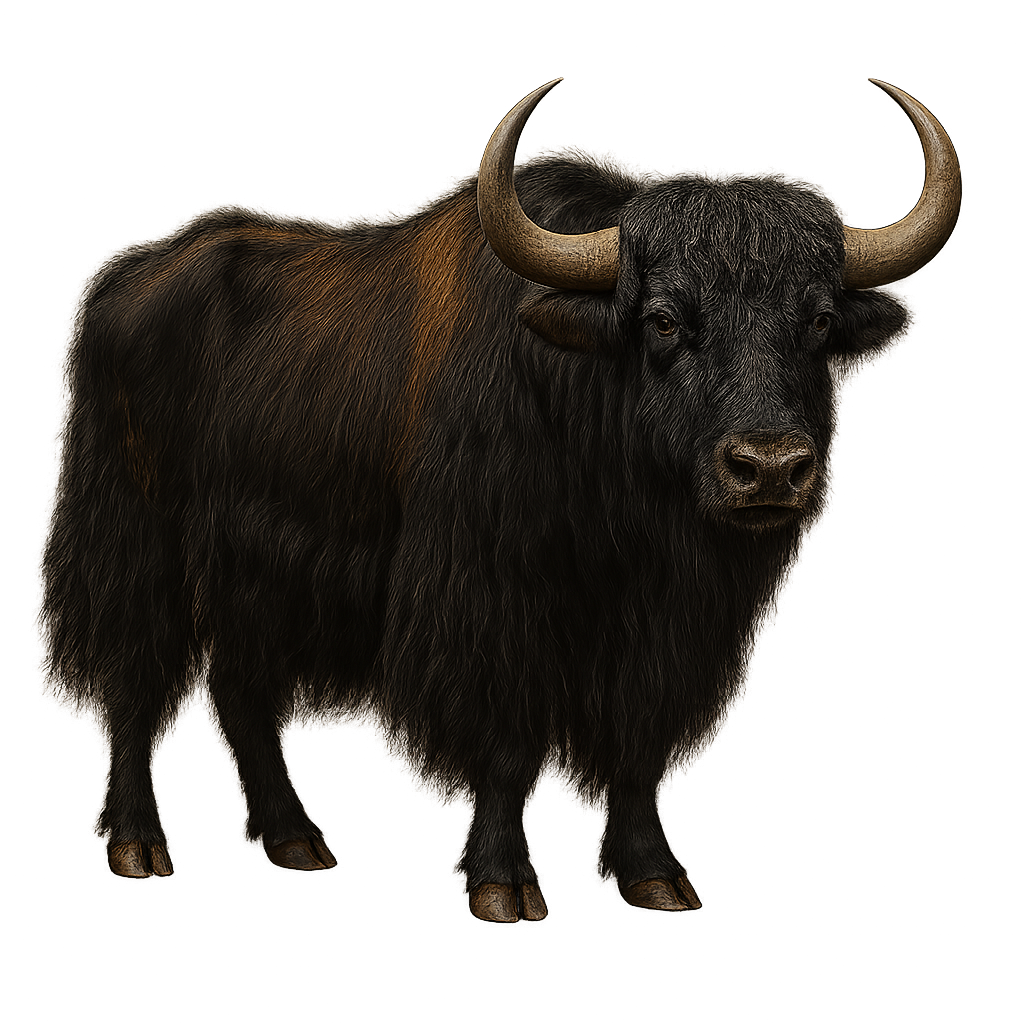Animal Species Profiles:
Mammals, Birds, Reptiles & More
Explore wildlife from around the world with the species profiles on WildlifePhotographer. Mammals, birds, reptiles… For each species, you’ll find key information such as habitat, observation periods, distribution, and photography tips. Want more details and advanced features? Download the full app for the complete experience.
White-faced capuchin
Cebus imitator
The White-faced Capuchin is a small, intelligent, and social monkey, easily recognizable by its pale face, framed by darker fur, and its agile, slender body. This primate lives in the tropical forests of Central and South America, primarily inhabiting the canopy, where it feeds on fruits, seeds, insects, and occasionally small vertebrates.
White-faced Capuchins are highly social animals, living in family groups or bands of up to twenty individuals. They are known for their great learning ability and curious behavior, often used in behavioral studies due to their intelligence and problem-solving skills. Unfortunately, like many other primate species, they are threatened by deforestation and habitat loss.
White-nosed coati
Nasua narica
The White-nosed Coati is a mammal from the raccoon family, easily recognized by its distinctive white snout that contrasts with its reddish-brown fur. It has a long, ringed tail that it uses to maintain balance while moving through trees. This small carnivore is primarily found in the tropical and subtropical forests of Central America, Mexico, and the southern Costa Rica, where it lives in social groups, often led by a dominant female.
Omnivorous, the White-nosed Coati feeds on fruits, insects, small vertebrates, eggs, and even small mammals. Its social lifestyle is marked by complex interactions within its family groups. Although its population remains relatively stable in certain protected areas, it is still threatened by deforestation, hunting, and habitat disruption. Conservation efforts aim to protect the forest areas of this agile and adaptable animal.
White-beaked dolphin
Lagenorhynchus albirostris
The White-beaked Dolphin is a small cetacean from the Delphinidae family, easily recognizable by its white beak and distinctive markings on its body. It typically measures between 1.5 and 2.5 meters in length and weighs between 70 and 150 kg. This dolphin primarily inhabits the cold and temperate waters of the North Atlantic, particularly around Iceland, Greenland, and the North American coasts. It primarily feeds on fish and cephalopods, using group hunting techniques to capture its prey. The White-beaked Dolphin is often seen in small groups or families, and it is known for its complex social behaviors, including group play and acrobatic leaps. This dolphin has a lifespan of about 20 to 30 years in the wild. Although the species is not currently endangered, it faces threats from pollution, underwater noise, and ship collisions. Managing its marine habitats is crucial for the preservation of this species.
Wolverine
Gulo gulo
The Wolverine is a robust and solitary carnivore, often compared to a small bear due to its size and strength. It measures about 65 to 87 cm in length, with a tail measuring 30 to 40 cm, and weighs between 10 and 30 kg. Its fur is typically dark brown, with lighter markings on the legs and throat, forming a distinctive "mask" around its face. The Wolverine has powerful musculature, allowing it to capture prey much larger than itself, such as deer or reindeer, although it primarily feeds on small mammals, insects, and carcasses. It is an opportunist, capable of stealing food from other predators such as wolves or bears. The Wolverine primarily inhabits the northern forests of Asia and North America, including Scandinavia, Russia, Canada, and Alaska. It is an excellent climber and swimmer, well-adapted to cold, snowy environments. Although its population remains relatively stable in some areas, the Wolverine faces threats related to habitat loss, climate change, and human persecution.
Western Gorilla
Gorilla gorilla
The Western Gorilla is a large primate species, closely related to its cousin the mountain gorilla. It is slightly smaller, with an average size of 1.6 to 1.8 meters for males and 1.4 to 1.6 meters for females, weighing between 140 and 200 kg for males and 70 to 120 kg for females. Its fur is generally black, with lighter hair on the back of adult males, who are referred to as "silverbacks" due to the silver color of their back fur. Western Gorillas primarily inhabit the tropical forests of West and Central Africa, notably in Cameroon, the Republic of Congo, the Central African Republic, and Guinea. They feed mainly on plants, fruits, leaves, and stems, and they are predominantly herbivores. Western Gorillas live in social groups led by a dominant male, and they are known for their calm and peaceful behavior. While they are not as endangered as mountain gorillas, Western Gorillas are still at risk due to habitat loss, poaching, and disease.
West Indian manatee
Trichechus manatus
The West Indian manatee is a large marine mammal, often called the 'sea cow.' It primarily lives in shallow coastal waters, estuaries, and rivers of the Caribbean, Gulf of Mexico, and Florida. This herbivorous mammal feeds mostly on aquatic plants and can consume up to 100 kg of vegetation per day. The West Indian manatee is a calm and slow-moving animal, with thick skin and sensitive whiskers that help it detect food in the water. While not aggressive, it is endangered due to habitat loss, boat collisions, and water pollution.
White-fronted lemur
Eulemur flavifrons
The White-fronted lemur is a species of lemur endemic to Madagascar, where it primarily lives in the humid tropical forests of the island's northwest. It is easily recognized by its gray-brown fur and the large white patch on its forehead, from which it derives its name. This lemur is primarily frugivorous, feeding on fruits, flowers, and nectar. It lives in complex social groups and exhibits strong territorial behaviors, including loud vocalizations to define its territory. Although often active during the day, it is also known to be particularly active at dusk.
Walrus
Odobenus rosmarus
The Walrus is a large marine mammal from the Odobenidae family, measuring between 3 and 4 meters in length and weighing between 800 and 1,500 kg. Males are generally much larger than females. This cetacean is distinguished by its long tusks, which can reach up to 1 meter in length in adult individuals, and its large, sensitive whiskers that help detect food on the ocean floor. The Walrus has short fur, typically brown or gray, but its skin is covered by a thick layer of blubber that helps it stay warm in the icy waters of the Arctic and North Atlantic. Walruses primarily inhabit coastal regions, where they feed mostly on mollusks, crustaceans, and fish. They spend a large part of their time on the ice, where they rest and socialize in large groups. While their population remains relatively stable, walruses face threats such as hunting, habitat loss, and the effects of climate change on their environment.
Wapiti
Cervus canadensis
The Elk is a large cervid primarily found in North America, in forests, grasslands, and mountains, notably in Canada and the United States. It typically measures between 1.5 and 2 meters in height at the shoulder and can weigh between 300 and 500 kg. The Elk is easily recognizable by its large antlers, which can reach up to 1.2 meters in width. Its coat varies from light brown to dark brown, with a lighter area around the neck. It primarily feeds on grasses, leaves, and bark, and is especially active during the fall, during the rutting season. While the Elk population is relatively stable, some subpopulations are threatened by habitat loss and disease.
Wild Yak
Bos mutus
The Wild Yak is a large species of cattle native to the mountains of the Himalayas, Tibet, and the high plateaus of Central Asia. It typically measures about 2 to 3 meters in length and weighs between 400 and 1,000 kg. Its coat is long, thick, and woolly, ranging from black to brown, which helps it survive in extreme cold conditions. The Wild Yak is primarily herbivorous, feeding on grasses, lichens, and woody plants. It lives in herds in mountainous environments at high altitudes, often above 3,000 meters. While it is a protected species in some areas, the Wild Yak is threatened by illegal hunting and habitat loss due to urbanization and excessive grazing.


